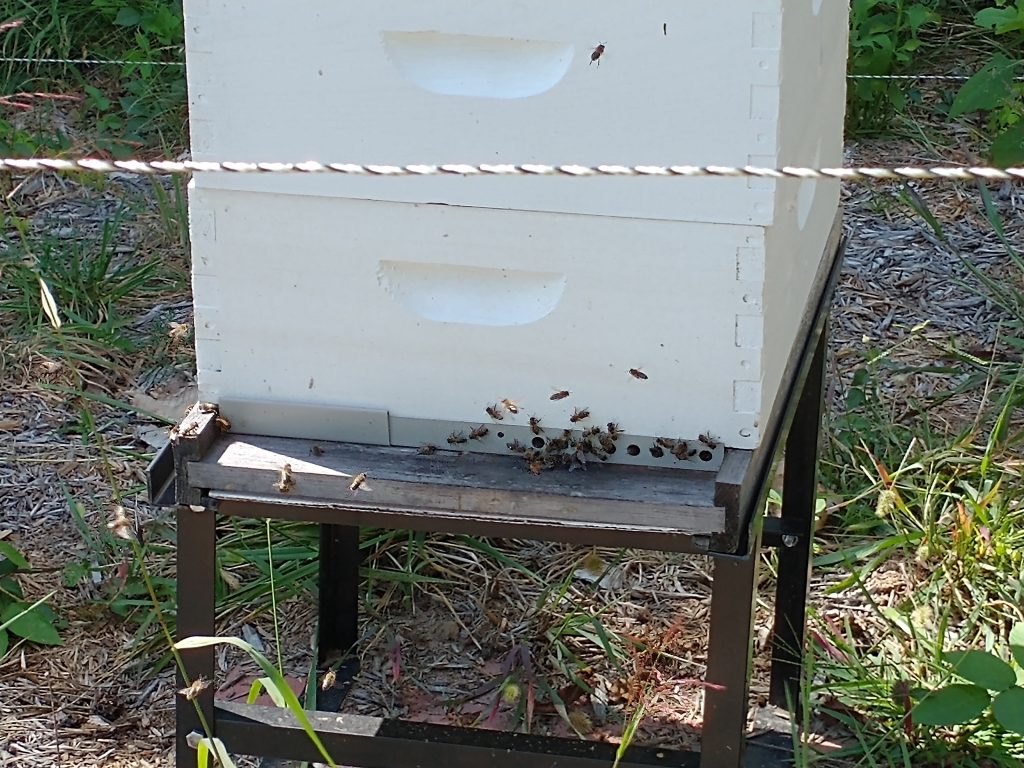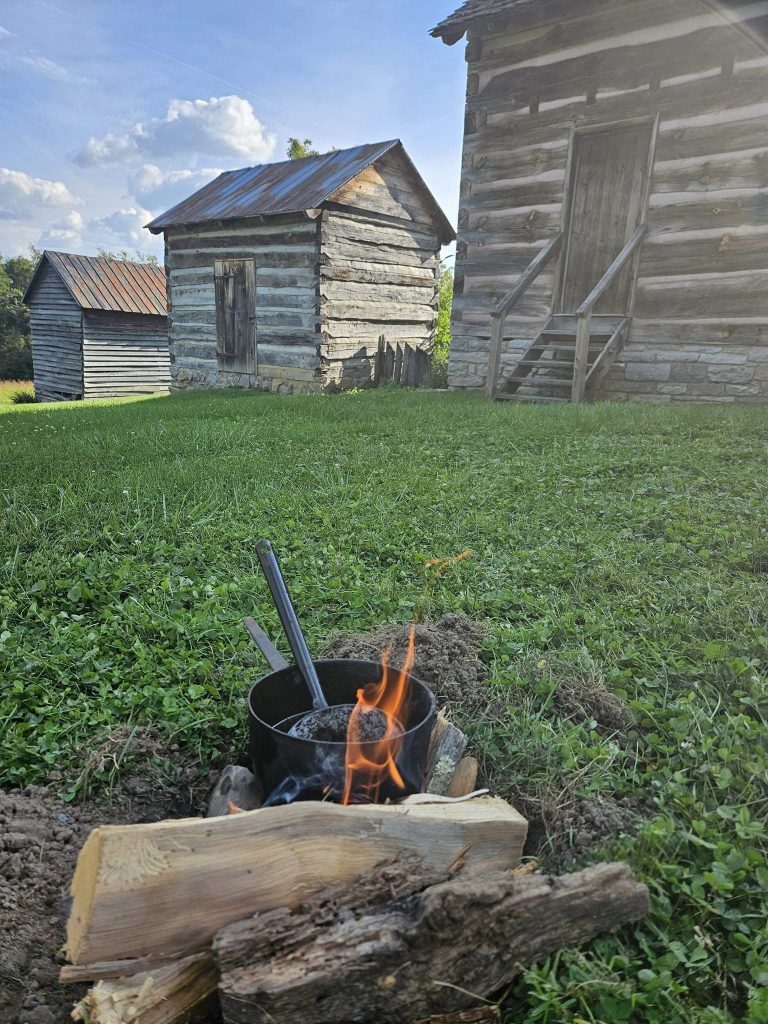Spring is the time the museum gets school groups to learn local history and pioneer life skills. Today we had about 97 sixth graders from one of the local middle schools to learn about western expansion from post Revolutionary War through the 1830s. The kids were divided into 6 groups that rotated through the 6 stations for about 20 minutes per station. As the resident spinner, I am privileged to get to use the loom house, an original Newbern, VA home, a 10 x 10 foot log cabin that was relocated from another lot in Newbern to the museum property in 1830 and given an upper loft. A bit of history about Newbern and the house which was occupied from 1830’s til well after the Civil War by an enslaved woman and her son. She was so valued as a weaver that after emancipation, she was allowed to continue to live in the house and was paid for her weaving skills for the community. Her son was the first African teacher for the freed African children and paid enough that he later paid his way through Hampton Institute to earn his teaching degree.

With me in this photo is Sarah, a local whose ancestors were enslaved Cherokee and Africans and she teaches about slavery for the groups. I discussed cottage industries of spinning and weaving and the life of a frontier woman.
Though the weather began dark and drizzly, we ended up with a mild, cloudy day and only an occasional mist, so very lucky as two of the 6 stations are outdoors and the groups of 12-15 students had to shift between the stations every 20 minutes.
Over the next two weeks, we will have 3 other groups visiting us there, another sixth grade group from a different middle school, a 4th grade group, and a 2nd grade group. The second graders might prove to be the most challenging to keep engaged, though I suspect their rotations will be much shorter.
As a retired educator, though not in history, I thoroughly enjoy working with the children and work hard to make the sessions interesting and engaging, throwing in tidbits like few baths, only about 2 outfits that are handed down until worn out, and the tasks that they were likely to have had to help the family. Many of the 4th and 6th graders have read some of the original fairy tale versions, so the Sleeping Beauty finger prick is fun to discuss from what probably really happened to her, as I am demonstrating spinning on a walking wheel with a quill. They are a fun age to teach.
I look forward to the future groups scheduled and any additional ones that may fill the calendar.









